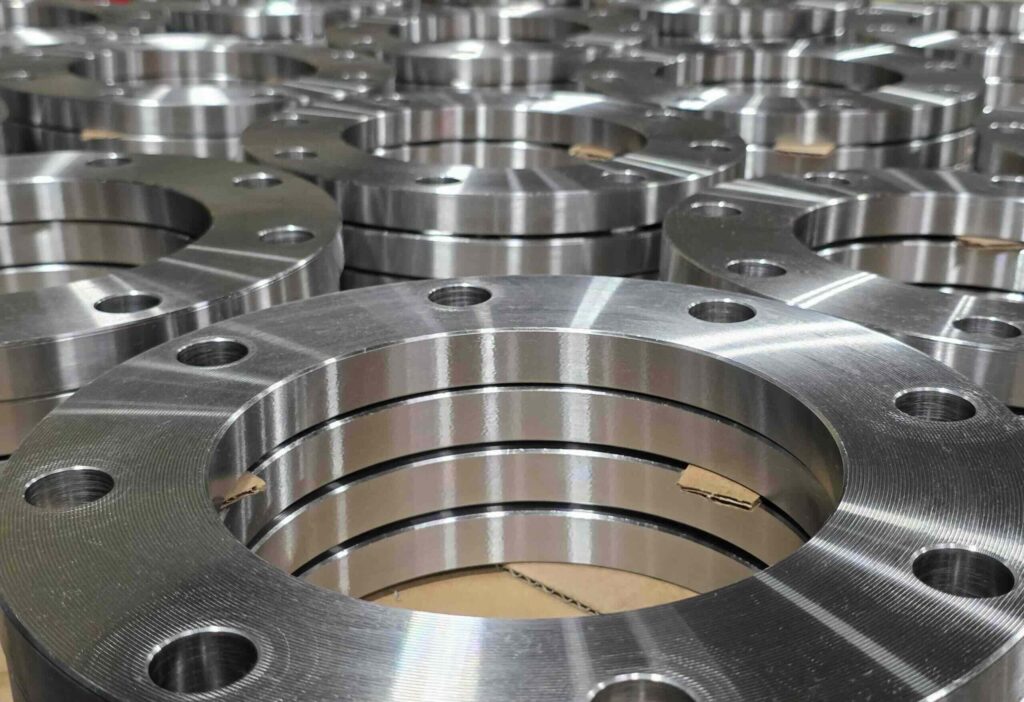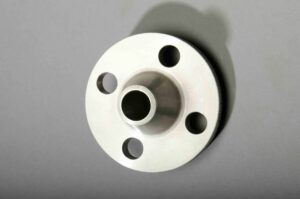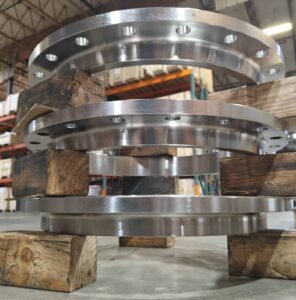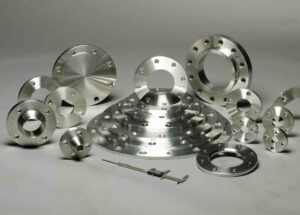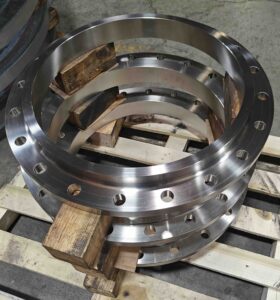Brief Overview of AWWA C207 and C228 Flanges
AWWA C207
AWWA C207 is a standard for steel ring flanges for waterworks service, providing guidelines for the design, materials, dimensions, and testing of flanges used in water systems. The C207 standard includes several classes of flanges, each designed to handle different pressure ratings. These flanges are typically made from carbon steel and are designed to handle pressure requirements of waterworks systems in industrial applications. They are commonly used in pipelines, water treatment plants, pump stations, and other infrastructure projects.
AWWA C228
AWWA C228 is a newer standard that specifies stainless-steel pipe flanges for water service. It includes guidelines for the design, material, and dimensions of stainless-steel flanges used in potable and non-potable water systems. These flanges are manufactured using corrosion-resistant stainless steel alloys, which enhances their performance in chemically aggressive or humid conditions. AWWA C228 flanges are ideal for applications like desalination, wastewater treatment, or marine infrastructure.
Comparison Table: AWWA C207 vs. C228
| Characteristic | AWWA C207 | AWWA C228 | Engineering Note / Balance Point |
|---|---|---|---|
| Material Composition | Carbon steel (typically ASTM A36 or A283 Grade C) | Stainless steel (typically ASTM A240, 304/304L, 316/316L, or duplex alloys) | C207 offers high strength but poor corrosion resistance; C228 is engineered for superior corrosion resistance in harsh environments. |
| Corrosion Resistance | Low– prone to rust in humid, saline, or chemical environments | High– resists corrosion in water, salt spray, and many chemical environments | Use C207 in non-corrosive conditions; use C228 in systems exposed to chemicals, saltwater, or high moisture. |
| Pressure Ratings (Class) | Class B (86 psi), Class D (175 psi), Class E (275 psi), Class F (300+ psi) for sizes 4″-144″ | Pressure ratings are equivalent to C207. C228 covers Class SA (50 PSI) | C228 offers Class SA (50 PSI), which provides C228 with a larger range of official pressure ratings. |
| Design Standard | ANSI/AWWA C207 – Steel pipe flanges for waterworks service from 4″ to 144″ NPS | ANSI/AWWA C228 – Stainless steel flanges for corrosive environments, 2″ – 72″ (smaller sizes available when compared to C207) | Dimensional compatibility is maintained between both; ensures easy substitution in designs. |
| Durability in Neutral Environments | High- performs well in clean water, municipal, or indoor systems | Very high- over-engineered for durability even in neutral environments | In clean municipal settings, C207 lasts decades; however, if unexpected moisture exposure occurs, C228 offers safer long-term protection. |
| Durability in Corrosive Environments | Low- subject to pitting, oxidation, or material loss over time | High- resistant to acids, chlorides, and extreme temperatures, depending on alloy | C228 minimizes maintenance and safety concerns in harsh systems. |
| Common Applications | Water treatment, building water systems, clean water transmission, general piping | Desalination, chemical plants, wastewater, marine systems, food-grade systems | C207 dominates in budget-driven municipal systems, while C228 is best suited for coastal, industrial, or regulated environments. |
| Lifespan (typical) | 15–25 years in clean environments | 25–50+ years in corrosive or marine conditions | When used in the correct environment, C207 is cost-effective; when exposed to corrosion, C228 is far more reliable and economical over time. |
| Initial Material Cost | ~$0.75–$1.20 per lb for carbon steel | ~$2.00–$4.00 per lb for stainless steel, depending on grade | C228 flanges are 2x–4x more expensive upfront; project engineers must weigh long-term risk and ROI. |
| Lifecycle Maintenance Cost | Higher potential for inspection, repainting, or replacement if corrosion sets in | Lower – minimal maintenance needed | For buried, submerged, or exposed flanges, lifecycle savings of C228 can outweigh upfront cost. |
| Weldability & Fabrication | Easier to weld and machine using standard carbon steel tools | Requires special tooling and higher expertise for welding/fabrication | Consider shop readiness and installation complexity: C207 is simpler, while C228 requires specialized skills. |
| Weight (Density Impact) | Typical A36 grade is slightly lighter – carbon steel ~7.85 g/cm³ | Typical A240 is slightly heavier – stainless steel ~7.9 g/cm³ (duplex may be lighter) | Overall negligible weight difference unless handling large-scale units; not a deciding factor. |
How to Choose the Right Flange for Your Project
1. Understand Your Project Requirements
2. Match the Flange to Environmental Conditions
3. Consider Pressure and Temperature Limits
4. Evaluate Long-Term Durability
5. Balance Initial Cost and Lifecycle Value
6. Ensure Standards and Availability
7. Final Decision Guidelines
| Project Environment | Recommended Flange |
|---|---|
| Clean water, low cost | AWWA C207 |
| Chlorinated, acidic, or saline systems | AWWA C228 |
| Thermal cycling | AWWA C228 |
| Indoors, dry mechanical rooms | AWWA C207 |
| Marine, wastewater, or chemical plants | AWWA C228 |

